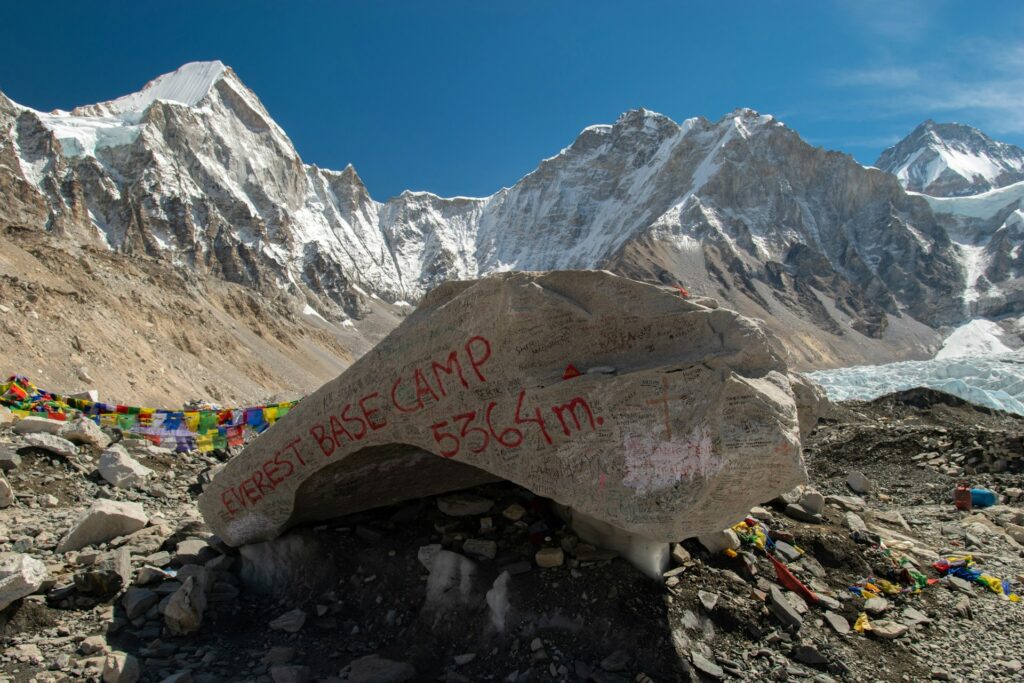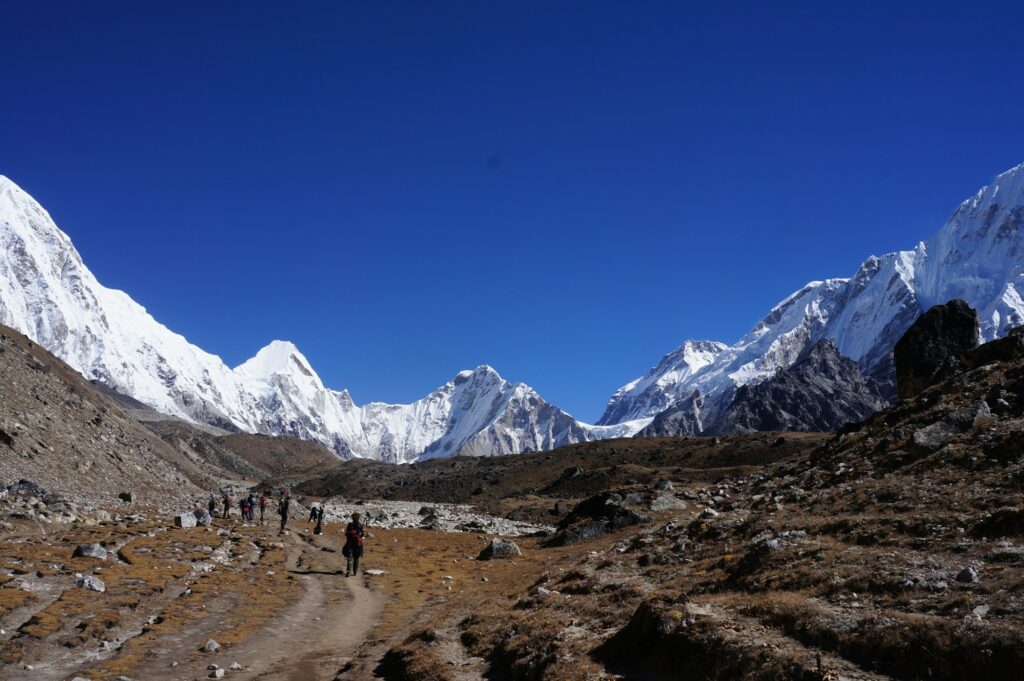The Everest Base Camp (EBC) trek is one of the world’s most iconic adventures. Thousands of people dream of standing beneath the towering peak of the world’s tallest mountain—but before lacing up your hiking boots, you might be wondering: how hard is it, really?
The answer isn’t entirely straightforward. While the trek is achievable for many people, it presents a unique set of challenges that make it a serious undertaking.
Let’s break down the challenges, bust a few myths, and give you an honest picture of what the trek demands—physically, mentally, and emotionally.
It’s Not a Technical Climb—But It’s No Walk in the Park Either

First things first: this isn’t a technical climb. There’s no need for ropes, harnesses, or crampons. If you’re picturing Everest summit attempts with oxygen masks and ice axes, relax—that’s not what this trek is about.
There are no vertical ascents or rock faces to scale. Instead, the trek is a long-distance hike through the Himalayas, reaching altitudes over 5,300 meters (17,500+ feet).
The EBC trek is essentially a long, high-altitude hike through the Khumbu Valley. You’ll be walking on rocky trails, crossing suspension bridges, and passing through traditional Sherpa villages.
But don’t be fooled. Even without technical climbing, the trek is no joke. The high altitude, cold temperatures, and day-after-day hiking require real grit and preparation.
Altitude: The Silent Challenge
If there’s one thing that catches trekkers off guard, it’s the altitude. As you climb higher, the air gets thinner. By the time you reach Everest Base Camp (5,364 meters/17,598 feet), you’re breathing in about half the oxygen you’re used to at sea level.
Symptoms of Acute Mountain Sickness (AMS) can include headaches, nausea, insomnia, and fatigue. It doesn’t matter how fit you are—altitude affects everyone differently.
That’s why acclimatization is key. A well-structured itinerary allows your body time to adjust.
Himalaya Heart, a Nepal-based trekking company, carefully plans their 12-day Everest Base Camp treks to prioritize safe elevation gain and rest days. Their knowledgeable local guides are trained to spot the signs of altitude sickness early and respond appropriately—giving you both peace of mind and a better shot at reaching Base Camp.
What Does a Typical Day Look Like?

Most days on the EBC trek involve 4 to 6 hours of hiking, with a couple of longer days mixed in. The distance might only be 8–15 kilometers (5–9 miles) per day, but don’t let that fool you. Hiking uphill at altitude takes time, and you’ll need to go slow and steady.
Some of the terrain is steep or uneven, and you’ll gain elevation gradually as you move from one teahouse to the next.
Expect early starts, lunch breaks at tiny mountain lodges, and downtime in the afternoons to rest, read, or play cards with fellow trekkers.
Weather: Beautiful, But Unpredictable
The best times to trek are pre-monsoon (March–May) and post-monsoon (late September–November). During these months, the skies are usually clear and the views spectacular. But weather in the Himalayas can be fickle.
You might experience warm sunshine, howling winds, rain, or even snow—all in a single day. Nights are cold, especially above 4,000 meters. Think below-freezing temperatures, even in peak season.
Being prepared with the right layers, a warm sleeping bag, and a good down jacket makes a world of difference.
Teahouses and Trail Life
The accommodations along the trail—called teahouses—are simple but charming. Most offer basic rooms with twin beds, shared toilets, and hearty meals. Don’t expect luxury.
Electricity is often available (for a fee), but Wi-Fi is patchy at best. Showers exist, but they’re usually cold or cost extra.
Meals tend to be carb-heavy: dal bhat (lentils and rice), pasta, potatoes, and soup. It’s comfort food meant to fuel your long days on the trail.
What Kind of Fitness Do You Need?
You don’t need to be an ultra-marathoner, but you do need to be in decent shape. If you can hike 6–10 miles in a day, handle stairs without gasping, and carry a daypack comfortably—you’re off to a good start.
Most people find that training hikes with some elevation gain, plus general cardio and leg strength, help enormously. What matters most is consistency and stamina—not speed.
Think of it as an endurance challenge rather than a sprint.
The Mental Game
Physical fitness helps, but mental resilience is just as important. The EBC trek can be monotonous, cold, and physically draining. You may wake up with a headache, feel tired of the food, or get frustrated by the lack of a hot shower.
But you’ll also experience breathtaking views, inspiring cultural encounters, and the unique camaraderie that only shared hardship can bring.
Going with a group or a supportive guide service helps. A sense of humor doesn’t hurt either.
So, Who Is This Trek For?
Great fit for:
- Moderately fit travelers who enjoy hiking and adventure
- People with a flexible mindset and positive attitude
- Anyone looking for a physical challenge and cultural immersion
Not ideal for:
- Those with serious health issues or heart/lung conditions
- Travelers expecting luxury or comfort
- People unwilling to unplug or adapt
Final Thoughts: Is It Worth It?
Absolutely. The Everest Base Camp trek is a physical, mental, and emotional journey that is worth doing once in your lifetime.The sense of achievement, the friendships formed on the trail, and the views of the Himalayas will stay with you long after you return home.
Yes, it’s challenging. But it’s also deeply rewarding.
And you don’t have to go it alone.
Companies like Himalaya Heart make the journey smoother and safer. With small-group treks, experienced local guides, and thoughtfully designed itineraries, they handle the logistics—so you can focus on the experience. Their Everest Base Camp trek includes rest days for acclimatization, cultural insights from Sherpa guides, and a well-paced route that sets you up for success.
Ready to Take the First Step?
If the thought of trekking to Everest Base Camp gives you butterflies (in the best way), that’s a sign you’re ready to start planning.
Take the guesswork out of the equation and explore the trek options from Himalaya Heart. Whether you’re a first-time trekker or a seasoned hiker, their team can help you craft a safe, memorable, and meaningful experience.If the mountains are calling you, click here to learn more and start your journey today.
More Reading


